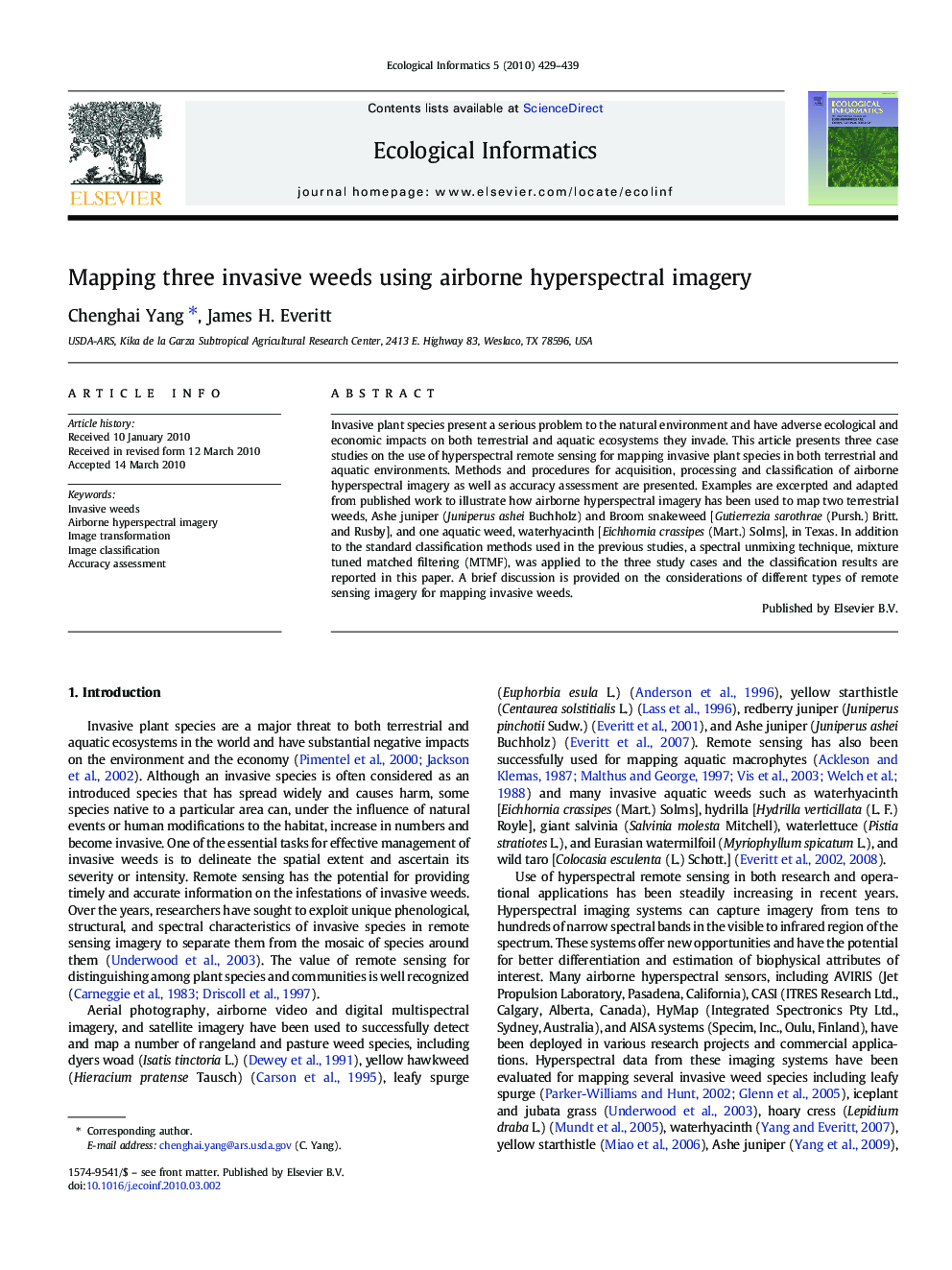| Article ID | Journal | Published Year | Pages | File Type |
|---|---|---|---|---|
| 4375282 | Ecological Informatics | 2010 | 11 Pages |
Invasive plant species present a serious problem to the natural environment and have adverse ecological and economic impacts on both terrestrial and aquatic ecosystems they invade. This article presents three case studies on the use of hyperspectral remote sensing for mapping invasive plant species in both terrestrial and aquatic environments. Methods and procedures for acquisition, processing and classification of airborne hyperspectral imagery as well as accuracy assessment are presented. Examples are excerpted and adapted from published work to illustrate how airborne hyperspectral imagery has been used to map two terrestrial weeds, Ashe juniper (Juniperus ashei Buchholz) and Broom snakeweed [Gutierrezia sarothrae (Pursh.) Britt. and Rusby], and one aquatic weed, waterhyacinth [Eichhornia crassipes (Mart.) Solms], in Texas. In addition to the standard classification methods used in the previous studies, a spectral unmixing technique, mixture tuned matched filtering (MTMF), was applied to the three study cases and the classification results are reported in this paper. A brief discussion is provided on the considerations of different types of remote sensing imagery for mapping invasive weeds.
